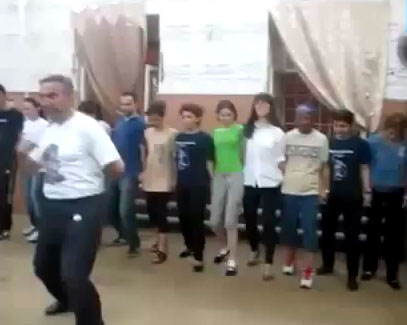“When I came to Armenia, the first thing I did, I began to inquire as to where one can learn folk dances», – says the Afro-American, the U.S. Embassy staff member in Armenia Jane Burt Lee, in an interview with Aravot.am, who was directed to study Armenian dances to “Karin” traditional dance school.
It is still hard for Jane to dance Armenian dances, but, as she says, she like them a lot and gets a lot of pleasure.
Jane has worked in different countries, and where she worked she was trying to know the country’s national dances. “I like dancing in general, there is much stronger energy in Armenian dances than other nations’. And when dancing I really feel the energy and feel that they are really military dances.”,-says Jane.
When we were present at one of the dance lessons, we noticed that Jane was attentively listening to the choreographer Gagik Ginosyan, we inquired whether she understands Armenian, it turns out that, no. To our question is not difficult to learn dancing without understanding the language, Jane said,- “I try to get into the music and to feel the dance with the help of it, therefore, I try to carefully listen to the choreographer and see what he feels, where he does what, and, accordingly, I am trying to repeat. The choreographer not only roughly introduces, but explains what dance or a movement means, explains the essence of the dance. Although I do not understand the majority of what he says, but I am trying to learn and remember some words. Yes, I need someone to translator from the side.”
One of Jane’s favorite dances is potpourri, and although Jane ensures that she likes military dances and their energy, the choreographer says that potpourri is considered a thwart evil dance, the meaning of the dance is to hit the evil, to destroy.
We asked Jane to compare the Armenian dances with her country’s national dance. “They are mainly Americanized way of ethnic dances of various European nations in the U.S. and, of course, they are rhythmic and lively, but they are not still military. The native Americans, the Indian Americans have military dances, but even so their military dances do not have such a strong energy, as the Armenian dances.”
Nelly BABAYAN























































